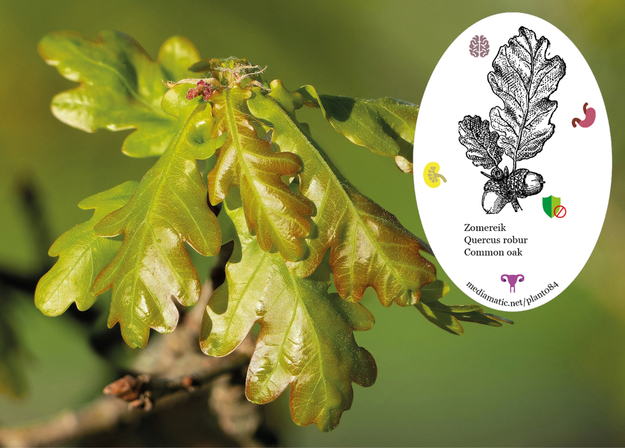The oak tree has a long history of medicinal use. It is anti-inflammatory, antiseptic, astringent, decongestant, haemostatic and tonic. The bark is the part of the plant that is most commonly used, though other parts such as the galls, seeds and seed cups are also sometimes used. A decoction of the bark is useful in the treatment of chronic diarrhoea, dysentery, intermittent fevers, haemorrhages etc. Externally, it is used to bathe wounds, skin eruptions, sweaty feet, piles etc. It is also used as a vaginal douche for genital inflammations and discharge, and also as a wash for throat and mouth infections. The bark is harvested from branches 5 - 12 years old, and is dried for later use. Any galls produced on the tree are strongly astringent and can be used in the treatment of haemorrhages, chronic diarrhoea, dysentery etc. The plant is used in Bach flower remedies - the keywords for prescribing it are 'Despondency', 'Despair, but never ceasing effort'. A homeopathic remedy is made from the bark. It is used in the treatment of disorders of the spleen and gall bladder. The German Commission E Monographs, a therapeutic guide to herbal medicine, approve Quercus robur Pedunculate Oak for coughs/bronchitis, diarrhoea, inflammation of mouth and pharynx, inflammation of the skin. Source: https://pfaf.org/
Common oak
Quercus robur
Find more about this tree on Wikipedia.
